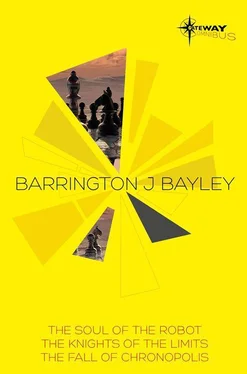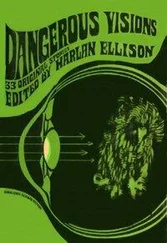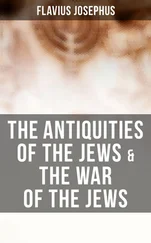In this respect the Knight included his only description of a species of locational-transitional space: a space where there was no sequential causality at all, but in which everything happened on a purely statistical basis. Wondering what it could be like on the inside of such a stochastic wonderland, I asked whether there could ever be the slightest possibility of intelligent, conscious entities arising there. To my surprise the Knight averred that it was well stocked with such entities: statistically intelligent, statistically conscious entities.
I have touched but lightly on the role of matter in the space-times I have discussed; it would be needless to tell my intelligent reader that matter and space are inextricably entwined. He will already have guessed that besides the innumerable spaces that form a receptacle for matter, there are also those that are Aristotelian in the sense of complying with that philosopher’s erroneous theories: where matter, instead of being atomic, is continuous and identical with the space it occupies, motion being accomplished by a process of compression and attenuation. There is no empty space in these continua, exactly as Aristotle reasons. In at least one such continuum all the matter is dense and solid, so that it consists of a blocked infinity of solid rock or metal (I am not sure which). In this continuum, the Knight admitted, the possibility of conscious intelligence could be discounted. In contrast to such immobility I particularly liked what the Knight called ‘folding space’ but which I have since named ‘origami space’ (origami is the Japanese art of paper-folding). Origami space has an inner richness that makes our own space look bland. Objects can be folded so as to develop entirely new qualities. A man (or entity), by folding a piece of paper in the right way, may make of it a chair, a table, an aeroplane, a house, a fruit, a flower, a live animal, another man, a woman, or practically anything. The art of such folding, it need hardly be added, far surpasses anything to be found in our Earthly origami. Mass and size are not constants in this continuum but can be increased (or decreased) by folding, hence a square of paper a foot on the side may end up as an airliner able to carry a hundred people.
After recounting these wonders the Knight paused to allow me to gather my mental breath. As if by way of relaxing he briefly outlined some primitive-sounding space-times that lacked our centreless relativity but were organised around a fixed centre. Remembering that earlier he had referred to our version of stereo space as a particularly rigid and restricted variety, I seized on this latest exposition to remark that at least the world I inhabited had the dignity of being infinite, symmetrical and unconstricted by having a centre. The Knight’s amusement was genuine, if gentle. With a dry laugh he instructed me that my mistake was a classic of unsophisticated presumption, and he regretted to have to inform me that my world did not have relativistic symmetry but that it had a centre .
Where was this centre? I asked. Once more came the Knight’s mocking chuckle. He had neglected to mention so far, he said, that also intimately related to the question of space is the question of numbers . Our space might have no identifiable centre in terms of motion and direction, but in its regard to number it was very strongly centred.
At first his meaning escaped me. Number was another way of classifying the innumerable kinds of space in the universe, he explained. There was at least one space for every possible number (a theorem stated that there were more spaces than one for every possible number), and they were arranged in an ascending series, each space having its ‘centre of gravity’ about a particular number. We are near to the bottom of the scale as our ‘centre of gravity’ is the number One (there are spaces preferring fractions and at least one preferring Zero). The consequences are immediate and self-evident: singleness is what signifies a complete object in our world; integral unity is all, and the state of there being two of a thing is incidental – a thing comes into its own when it is one . We all accept this innately. Every entity and thing is itself by assigning the number One to itself. Higher numbers introduce additional qualities, but do not carry the same weight as one . [2] By way of example, we conceive of Two as ‘Two Ones’.
In the space next above us in the scale completeness attaches to the number two . ‘Two-ness’ is ideal, and singleness is incomplete in the same way that a fraction or a part is incomplete in our world. I reflected on what a mass migration there would be if communication could be established with that world – for we also have the yearning after two in our shadowy, tantalised way. Our lives are full of complementary pairs. The tragedy of lovers is that they are thwarted by the One-ness of the spatial system: each remains alone and solitary, however much they strive and strain to be completely merged as two – for the vain yearning of lovers is not to be made One, which would negate the whole proceeding, but to be, as it were, indistinguishably blended as Two. Should a pair of Eros-struck lovers by some magic or science transpose themselves to this other realm where Two is All, then their bliss would be beyond describing.
More remotely, other worlds model themselves on Three, Four, Five, and so on up the scale of integers to infinity. In addition there is a corresponding scale of negative integers, as also of worlds modelled on every possible fraction, on irrational numbers, on imaginary numbers, and on groups, sets and series of numbers, such as on all the primes, all the odd integers, all the even integers, and on arithmetic and geometric progressions. Beyond even these abstruse factualities are the ranges of worlds, centred on numbers and number systems not possible or conceivable to us. The only truly symmetrical, non-centred, relativistic space-time, said the Knight, is one giving equal weight to all numbers.
Georg Cantor, wrestling with the enigma of the infinite, discovered a branch of mathematics called transfinite arithmetic, in which he developed a progression of numbers analogous to the positive integers but whose first term was infinity and whose succeeding terms were as qualitatively different from and beyond infinity as are Two, Three, Four, etc., beyond One. In short, he found that there are numbers larger than infinity. As might be expected, the Knight confirmed the reality of this number system and of the transfinite space that goes with it. There is a whole range of transfinite spaces, probably even larger than the range of finite and infinite spaces (since the number of total spaces is both finite, infinite and transfinite). At this point the Knight seemed to think that we were wandering from the type of description from which I might be expected to profit, and proposed to resume, expatiating on those nearer to familiarity. I objected; it was diverting, but less challenging, to be presented with nothing but modifications of an existence I already knew. In a sense I could almost have invented these modifications myself. Would not the Knight consent to offer me, or at least attempt to make me understand, worlds having no common ground with my own – for even the Knight’s own locational-transitional space-time, I reminded him, was not hard to describe. I longed to hear something so original as to blow my mind free of all its preconceptions. After some hesitation and muttering as to the perplexities engendered by my request, the Knight agreed to make the effort and favoured me with the following amazing descriptions: [3] A second break occurs in the manuscript here. The Narrator pleads that this section was too ephemeral to remember or too abstruse to be outlined in words; The Editor surmises that his invention had run dry – Ed.
Читать дальше












